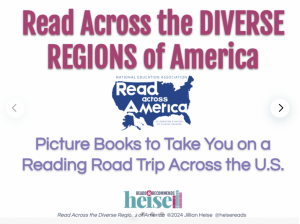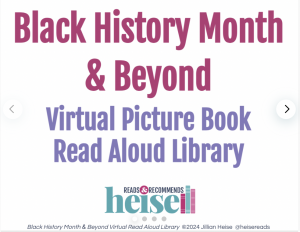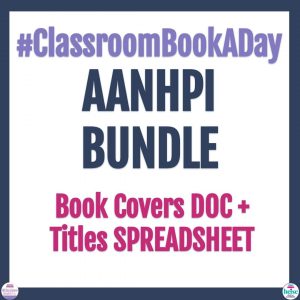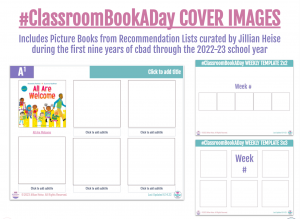Edit 11/1/19:
It was brought to my attention that in centering my work I neglected to recognize the work of Native librarians and scholars who have been doing this work for many years. In my efforts to promote quality books, I missed the chance to amplify voices of Native scholars / organizations / sites that are my go-to resources for finding Native perspectives and guidance on evaluating books with Native content. I am adding several of them to the beginning of this post and encourage you to visit/follow them, read their work, and use their recommendations to guide your book selection. They have all informed my work, practice, & understanding of Native Nations’ cultures and representation.
A first place to go for recommendations on books with Native creators/content is the American Indian Library Association’s American Indian Youth Literature Award. Every other year, since 2006, “the AIYLA identifies and honors the very best writing and illustrations by and about Native Americans and Indigenous peoples of North America. Books selected to receive the award present Indigenous North American peoples in the fullness of their humanity.” Their award will also be announced as part of the ALA Youth Media Awards announcements for the first time in January 2020.
Dr. Debbie Reese’s website, American Indians in Children’s Literature, is one of my go-to resources for finding critical reviews of children’s literature with Indigenous content. I have learned much from her and her critiques about the essential need for representation that is accurate and authentic in books about Native Nations and peoples. She also includes yearly best books recommendations.

Oyate “a Native organization working to see that our lives and histories are portrayed with honesty and integrity, and that all people know that our stories belong to us. For Indian children growing up in the 21st century, it is as important as ever for them to know who they are and learn about the histories that they come from. For all children, it is time to know and acknowledge the truths of history. Only then will they come to have the understanding and respect for each other that now, more than ever, will be necessary for life to continue.”

Cynthia Leitich Smith is a citizen of the Muscogee Nation, children’s book author of picture books to young adult. She also promotes Native books and creators and has kidlit recommendations on her site.
Indigo’s Bookshelf is a blog by the teens & young adults behind the twitter account @OfGlades.
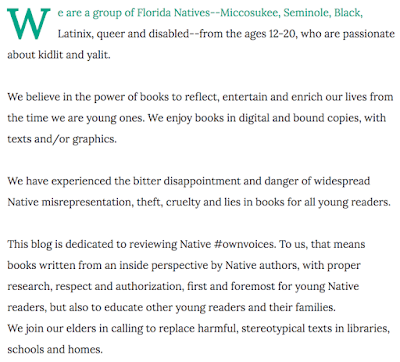
Original Post 10/30/19:
My November #classroombookday post for Follett Community this year shares my picture book recommendations for Honoring Voices of Native Nations. My post is timed to align with Native American Heritage Month, but I hope you’ll share these books with your students throughout the year, not just in November, because all students deserve to be represented in the classroom all year long. Please visit this link to read my entire post supporting these recommendations with more context and guidance for critically analyzing Native representation in books you choose to share with students.
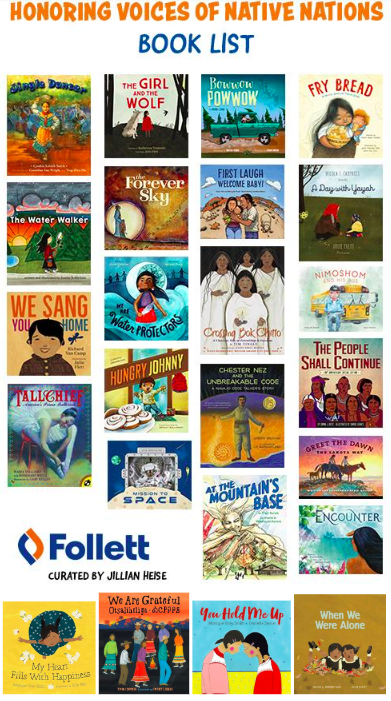
The National Congress of American Indians says this about Native American Heritage Month: “The month is a time to celebrate rich and diverse cultures, traditions, and histories and to acknowledge the important contributions of Native people. Heritage Month is also an opportune time to educate the general public about tribes, to raise a general awareness about the unique challenges Native people have faced both historically and in the present, and the ways in which tribal citizens have worked to conquer these challenges.” I hope these picture book recommendations will help you work toward that goal.
What do you picture when someone references Native Americans or American Indians? Is it the “leathered and feathered vanishing race” of historical representations (Matika Wilbur, TEDtalk, 2013)? Is it the “stereotypical images of young children in headdresses, passive girls in long, black braids, and the portrayal of native people as savage beasts are reported in many children’s books today” (McMahon, Saunders, & Bardwell, 1996, as cited in Sabis-Burns, 2011, p. 135)? Is it the fake feather headband and buckskin clothes of the clipart kids that are prevalent in a simple Google search or on Teachers Pay Teachers resources? Is it these stereotypical, inaccurate, historical, biased views of Native Americans that children are socialized into? And how do we offset that in the classroom? Our #classroombookaday read-alouds are a great place to start. If we focus on selecting books from #ownvoices authors and illustrators who share their tribal affiliation or membership, look for tribally specific characters and stories that avoid the monolithic view of Native Americans as all one culture versus more than 570 individual sovereign nations. Look for those that include Native peoples in the present day with contemporary clothing and references (and present tense!), and we can start to offset the stereotypes with authentic portrayals.
Fox and Short (2004) point out, “every child reserves the right to see themselves positively and accurately portrayed in stories and to find truth based on their own experiences instead of negative stereotypes and misrepresentation” (as cited in Sabis-Burns, 2011, p. 133). Whether you have Native students in your classroom or not, it is vital that all children see contemporary, accurate, positive representations of Native peoples in the books that are shared in school. Mora (1998) claims, “How a media depicts a group affects how a group sees itself, such is the power of images, the power of words” (as cited in Cai, 2002, p. 71). Those images and words have that same power over how children from outside that group see those within it. When children are exposed to stereotypical images of a racial group over and over in the books they read, it negatively affects the perception of that group from both cultural insiders and outsiders. That is where our picture book choices for read-alouds can make a difference. We have the ability to share positive, contemporary, realistic, accurate representations of Native peoples and cultures of Native Nations that can serve to offset the negative images many students get throughout school and the media they consume.
Dr. Debbie Reese’s website, American Indians in Children’s Literature, is one of my go-to resources for finding critical reviews of children’s literature with Indigenous content. I have learned much from her and her critiques about the essential need for representation that is accurate and authentic in books about Native Nations and peoples. I cited her work along with several other researchers and scholars during a recent MLIS grad class on multicultural children’s literature, for which I chose to do A Critical Analysis of Native Representation in Picture Books for my final research paper. I put together a shareable graphic on guidelines for critically assessing Native content in children’s literature. I am hopeful this will be a resource to help you in selecting books for #classroombookaday, other read-alouds, your curriculum selections and your classroom or school library.
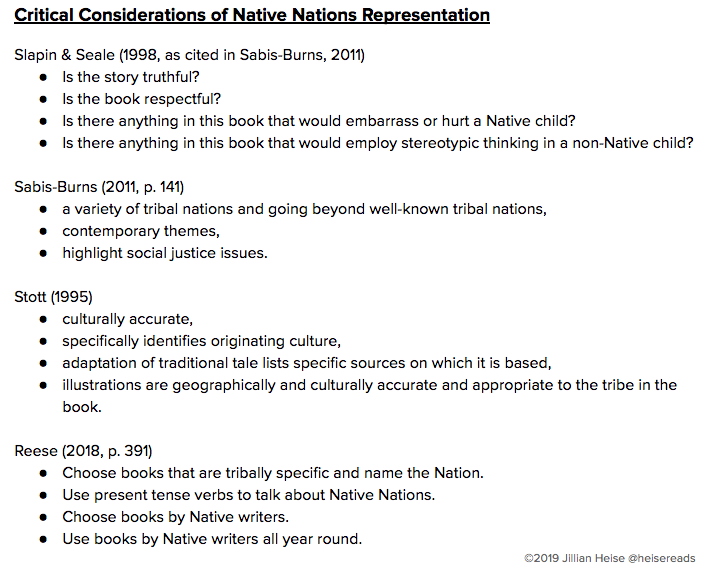
The books I have selected for this month’s recommendations meet the criteria on this list upon a critical read. Be sure to also read the back matter for any of these books that includes it. Further information can set context and make the difference between fully understanding the message of the book versus putting a white-centric perspective onto it. A prime example, Luby & Goade’s Encounter is a Native perspective on first contact that is far better than Yolen’s popular one (about which Dr. Reese had shared critiques). However, if this new Encounter is shared uncritically with just the story itself, it can lead to a skewed perspective of friendliness of these encounters which is a disservice to kids and classrooms trying to do more anti-bias work in considering whose story is told and which perspectives are missing. But when pairing Luby’s back matter alongside the text of the story, it can serve to spark more critical thinking and lead to valuable conversations about the colonists’ arrival on indigenous lands.
That is the power of sharing picture books with Native representation all year long (remembering to prioritize those with contemporary settings!) so that representation is present and deeper conversation and learning can happen beyond biased perspectives textbooks provide, all during enjoyable read aloud experiences. I believe these picture books are all ones that will make a good addition to your #classroombooakday read-alouds throughout this year.




















